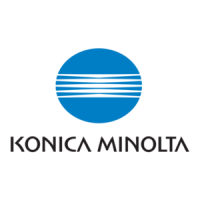3.2 Operation of DR Detector
76
IMPORTANT
•••••••••••••••••••••••••••••••••••••
• If you restart the image processing controller, also
restart the AeroDR Interface Unit or AeroDR Interface
Unit2.
•••••••••••••••••••••••••••••••••••••••••••••••••••••
AED (Automated External Debrillator)
• When an AED (Automated External Debrillator)
is used, move the DR Detector away from the pa-
tient. High voltage and high current may result in
a breakdown of the DR Detector.
The operating temperature environment of
DR Detectors
• If an DR Detector is left close to or in contact with
a heat generator such as electric carpet, its safety
device may be activated and the DR Detector
may fail to work properly.
Electromagnetic waves
• If an exposure is performed at a location near a
device that emits electromagnetic wave, noise
may appear on the image. When performing ex-
posure, turn off that device or move that device
away from DR Detector.
Waterproof performance of the AeroDR
2 1417HQ, AeroDR 2 1417S, AeroDR 3
1417HD, AeroDR 3 1717HD and AeroDR 3
1012HQ
• If there is a risk of the ingress of patient body
uids, chemicals, water, etc., make sure to put a
cover with a vinyl sheet, etc. The ingress of pa-
tient body fluids, chemicals, water, etc. into the
DR Detector cannot be prevented. In particular, if
patient body uids enter into the protective cover,
for hygienic purposes, make sure to replace or
clean the parts. In particular, if patient body uids
enter into the protective cover, for hygienic pur-
poses, make sure to replace or clean the parts.
• Subjecting it to strong impacts or excessive loads
by dropping or hitting it against other objects may
diminish its waterproof capabilities.
• It is designed to have IPX6 waterproof capabili-
ties, but it is not guaranteed to be completely wa-
terproof.
IMPORTANT
•••••••••••••••••••••••••••••••••••••
• The AeroDR 1417HQ, AeroDR 1417S, AeroDR
1717HQ, and AeroDR 1012HQ are not waterproof.
•••••••••••••••••••••••••••••••••••••••••••••••••••••
HINT
•••••••••••••••••••••••••••••••••••••
• An IPX6 (level of jet stream protection) rating indicates
that the AeroDR 2 1417HQ, AeroDR 2 1417S, AeroDR
3 1417HD, AeroDR 3 1717HD and AeroDR 3 1012HQ
are designed to operate even after being exposed to
normal temperature water projected from all angles
through a 12.5 mm nozzle for 3 minutes or more (at a
ow rate of about 100 L/min) from a distance of 3 me-
ters.
•••••••••••••••••••••••••••••••••••••••••••••••••••••
Exposure with the remote table
• The DR Detector is precision equipment, there-
fore impact or vibration during exposure and im-
age transfer may aect the image quality. Impact
or vibration when performing exposure using the
remote table in particular may significantly in-
crease the eect, therefore observe the following.
– Prevent the DR Detector from moving until the
preview image is displayed immediately after
exposure.
– Do not operate the remote table to eject the
DR Detector or load the DR Detector to the
standby position.
– Do not move the remote table position horizon-
tally or vertically.
• Check that the DR Detector does not automati-
cally move immediately after exposure. If it does,
please contact a technical representative of the
X-ray device manufacturer and request to change
the settings so that the DR Detector does not
move immediately after exposure.
• If the settings of the X-ray device cannot be
changed, check the image quality in advance.
Please contact Konica Minolta technical repre-
sentative for more information about how to check
the image quality.
• When using the remote table for exposure in
Aero Sync mode of AeroDR 3 1417HD, AeroDR
3 1717HD and AeroDR 3 1012HQ, ensure to ex-
pose the X-ray to the entire surface of DR Detec-
tor.

